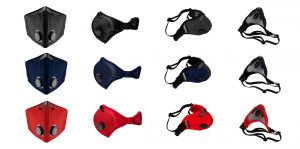Beyond the Haze: Protecting Your Lungs in Hanoi’s Polluted Environment
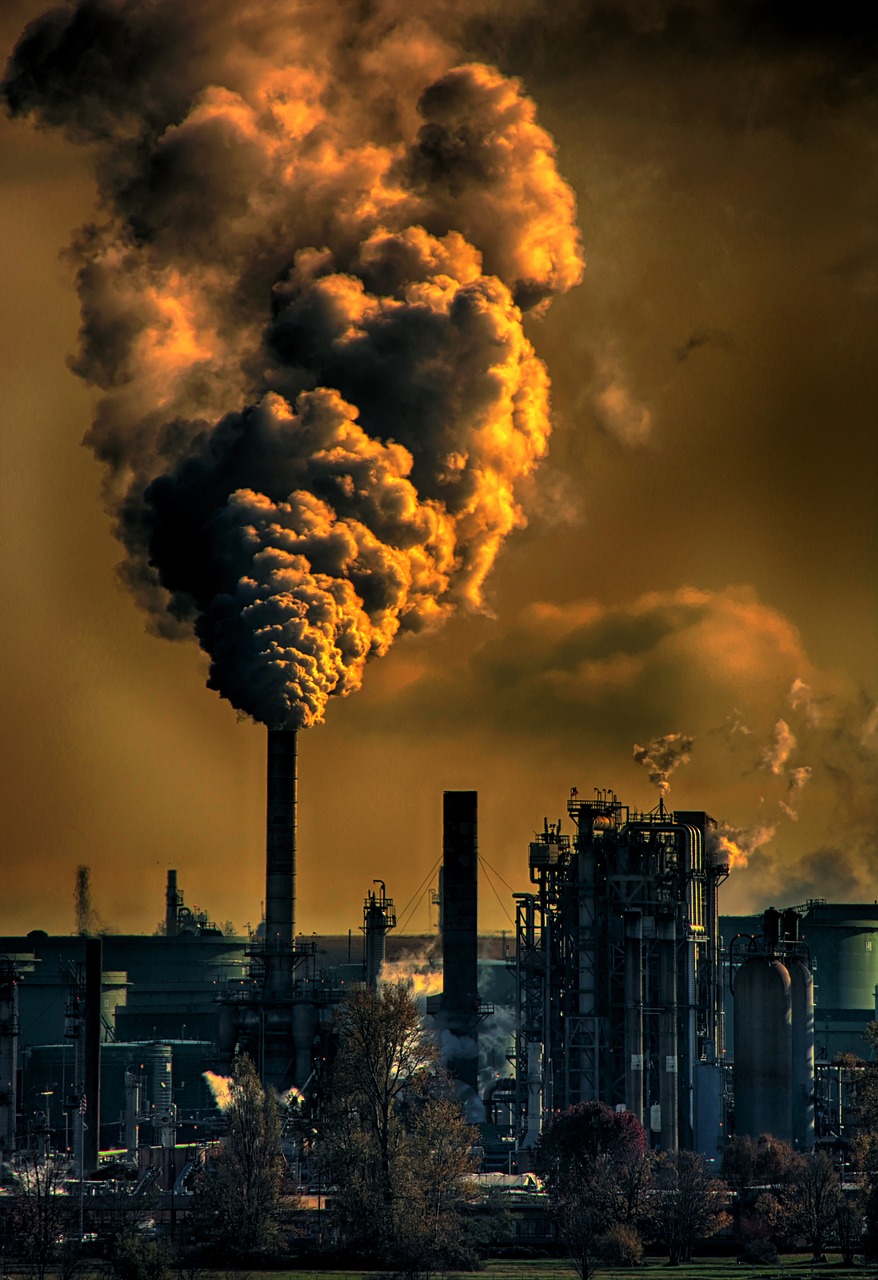
Hanoi’s pollution isn’t just an eyesore – it’s a serious health hazard. The city’s air is filled with tiny, invisible particles that can wreak havoc on your respiratory system. While the immediate effects of pollution, like coughing and wheezing, are noticeable, the long-term consequences are even more alarming.
The Silent Killer: Long-Term Effects of Air Pollution
Repeated exposure to Hanoi’s polluted air can lead to chronic respiratory conditions like asthma, bronchitis, and even lung cancer. The fine particulate matter (PM2.5) found in the air can penetrate deep into your lungs, causing inflammation and damage over time.
But the damage doesn’t stop there. Studies have also linked air pollution to cardiovascular disease, stroke, and even neurological disorders. The toxins in the air can enter your bloodstream and affect your entire body, increasing your risk of serious health problems.
The Importance of Proactive Lung Protection
Protecting your lungs from Hanoi’s pollution is crucial for your long-term health. While avoiding polluted areas altogether may not be feasible, there are steps you can take to minimize your exposure and safeguard your respiratory system.
- Wear a High-Quality Mask: A mask with advanced filtration technology can effectively block out harmful particles and protect your lungs.
- Monitor Air Quality: Stay informed about the air quality index (AQI) and adjust your activities accordingly. Avoid outdoor exercise or strenuous activities when pollution levels are high.
- Stay Hydrated: Drinking plenty of water helps flush out toxins from your body and keeps your respiratory system healthy.
- Boost Your Immune System: A strong immune system can help your body fight off the negative effects of pollution. Eat a healthy diet, get enough sleep, and manage stress.
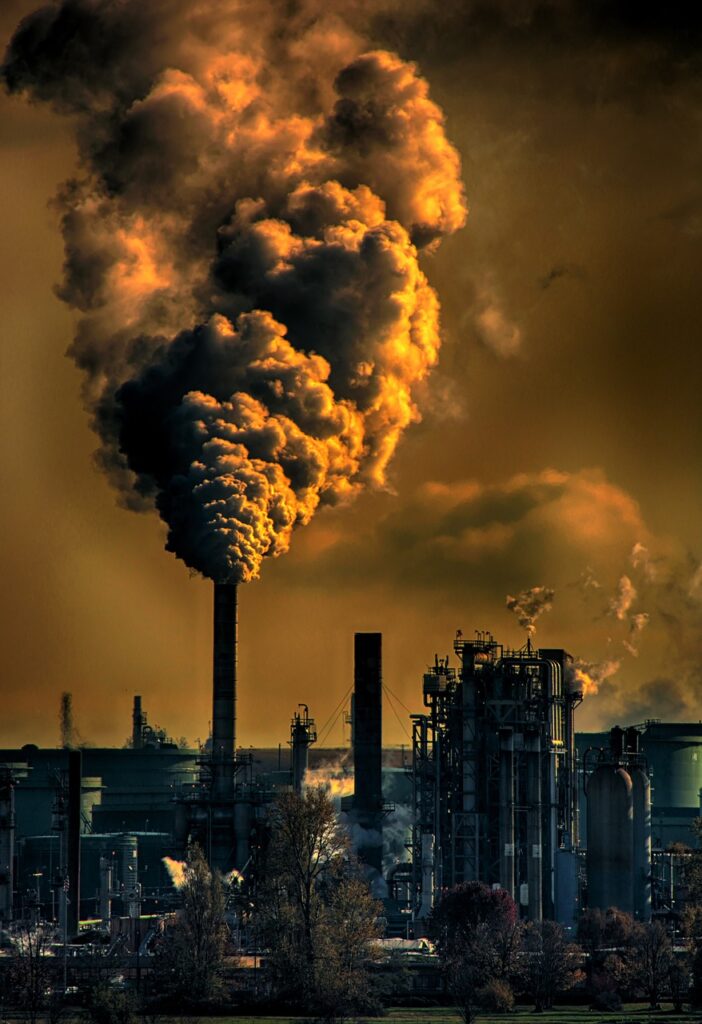
Worried about the air quality? Learn how to monitor pollution levels in ‘Hanoi Air Quality Alert: How to Monitor Pollution Levels and Stay Safe’.

Is Hanoi’s Air Quality Affecting Your Health? Signs You Need a Mask

Are you experiencing unexplained coughs, headaches, or fatigue? Have you noticed your allergies or asthma worsening since moving to Hanoi? These could be signs that Hanoi’s air pollution is taking a toll on your health.
While the city’s vibrant atmosphere and rich culture are undeniable, the poor air quality can pose a serious threat to your well-being. It’s essential to recognize the symptoms of air pollution exposure and take steps to protect yourself.
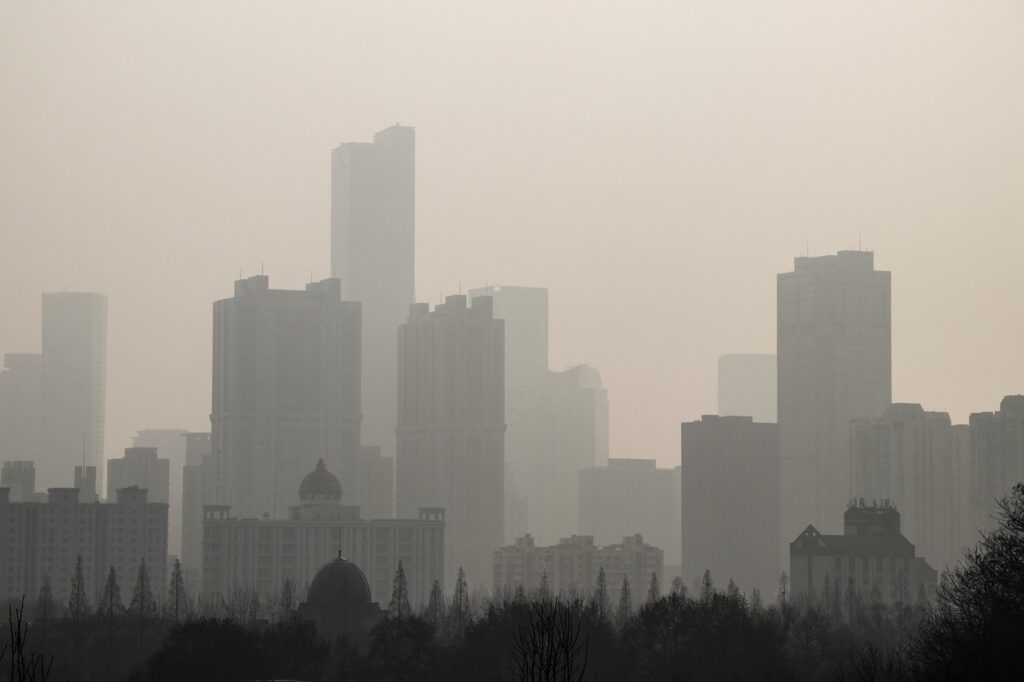
The Silent Threat: How Air Pollution Affects Your Body
Hanoi’s air pollution contains a cocktail of harmful substances, including particulate matter (PM2.5), nitrogen dioxide, and sulfur dioxide. These pollutants can irritate your respiratory system, trigger inflammation, and even damage your heart and lungs.
The most common symptoms of air pollution exposure include:
- Respiratory Problems: Coughing, wheezing, shortness of breath, sore throat, and chest tightness.
- Headaches and Fatigue: Air pollution can reduce oxygen flow to your brain, leading to headaches, dizziness, and fatigue.
- Eye, Nose, and Throat Irritation: Burning eyes, runny nose, and scratchy throat are common reactions to air pollution.
- Worsening Allergies and Asthma: Pollutants can trigger allergy and asthma symptoms, making existing conditions worse.
- Skin Problems: Air pollution can irritate your skin, leading to dryness, rashes, and other skin problems.
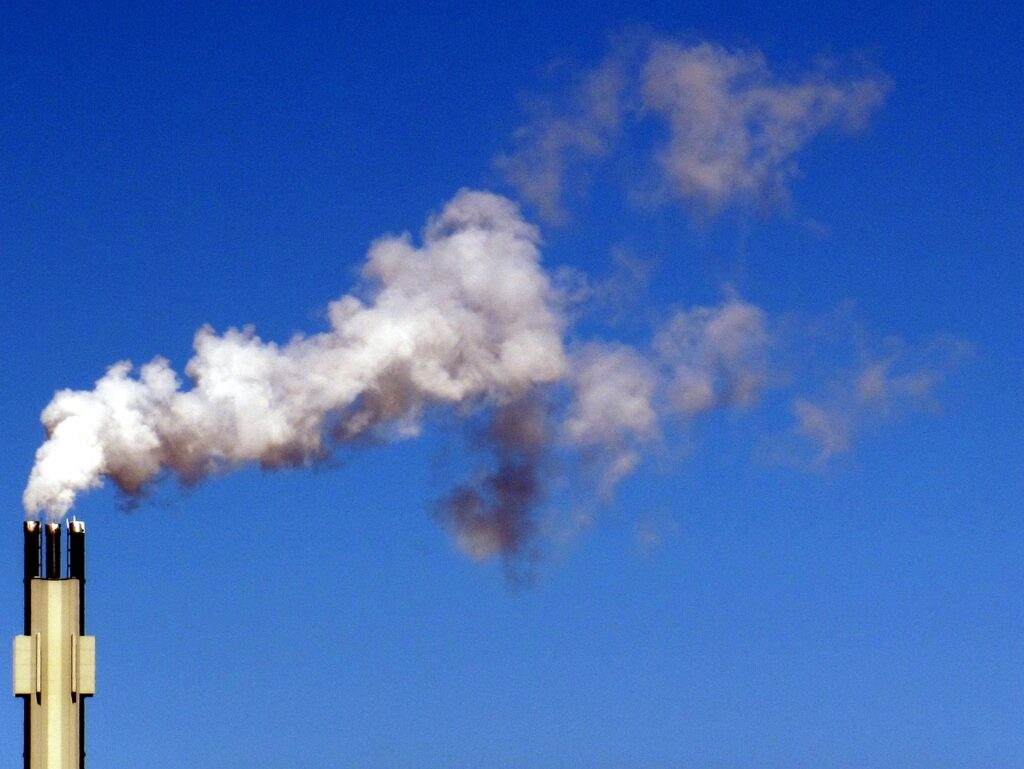
When to Consider Wearing a Mask
If you’re experiencing any of the symptoms mentioned above, or if you have a pre-existing respiratory or cardiovascular condition, wearing a pollution mask can be a crucial step in protecting your health.
Consider wearing a mask when:
- The air quality index (AQI) is high: Check the AQI for Hanoi before heading out. If the AQI is unhealthy, a mask can provide essential protection.
- You’re spending time outdoors: Whether you’re commuting, exercising, or running errands, a mask can filter out harmful pollutants.
- You’re in a high-traffic area: Areas with heavy traffic tend to have higher levels of pollution.
- You’re sensitive to air pollution: If you notice your symptoms worsen when the air quality is poor, a mask can offer relief.
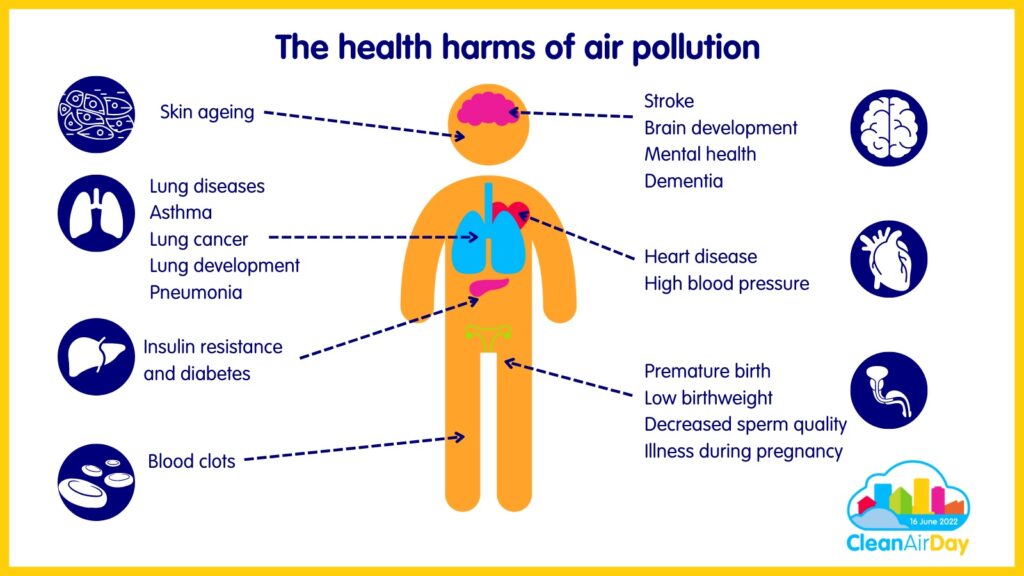
https://www.globalactionplan.org.uk/news/clean-air-day-2022air-pollution-impacts-every-organ-in-the-body
To learn more about the long-term effects of Hanoi’s pollution on your lungs, read ‘Beyond the Haze: Protecting Your Lungs in Hanoi’s Polluted Environment’.
Don’t Let Hanoi’s Pollution Hold You Back: Your Guide to Breathable Masks

“Hanoi’s vibrant energy shouldn’t come at the cost of your health. Discover how breathable masks can help you enjoy the city without sacrificing your well-being.”
Hanoi’s vibrant energy shouldn’t come at the cost of your health. Whether you’re exploring the Old Quarter, cycling around West Lake, or simply commuting to work, the city’s pollution can put a damper on your daily activities. But it doesn’t have to.
Breathable pollution masks are the key to enjoying Hanoi’s unique charm without sacrificing your well-being. Gone are the days of stuffy, uncomfortable masks. Today’s high-performance masks are designed to keep you protected while allowing you to breathe easily and stay active.

Why Breathability Matters
A breathable mask is essential for anyone who wants to stay active in Hanoi. Whether you’re jogging, cycling, or simply walking around, a mask that restricts your airflow can make it difficult to enjoy your activities.
Look for masks that use innovative materials and technologies to maximize airflow while still filtering out harmful pollutants. Features like exhalation valves, breathable fabrics, and ergonomic designs can make a significant difference in your comfort and overall experience.
Beyond Breathability: Other Essential Features
Breathability is just one factor to consider when choosing a mask. Here are some other essential features to look for:
- High Filtration Efficiency: Make sure your mask filters out at least 95% of PM2.5 particles. N95, FFP2, or KN95 masks are good options.
- Comfort and Fit: A mask that fits well and doesn’t irritate your skin will be more comfortable to wear for extended periods.
- Style: Who says pollution masks can’t be stylish? Look for masks in a variety of colors and designs to match your personal taste.
- Durability: Invest in a mask made from high-quality materials that can withstand daily wear and tear.
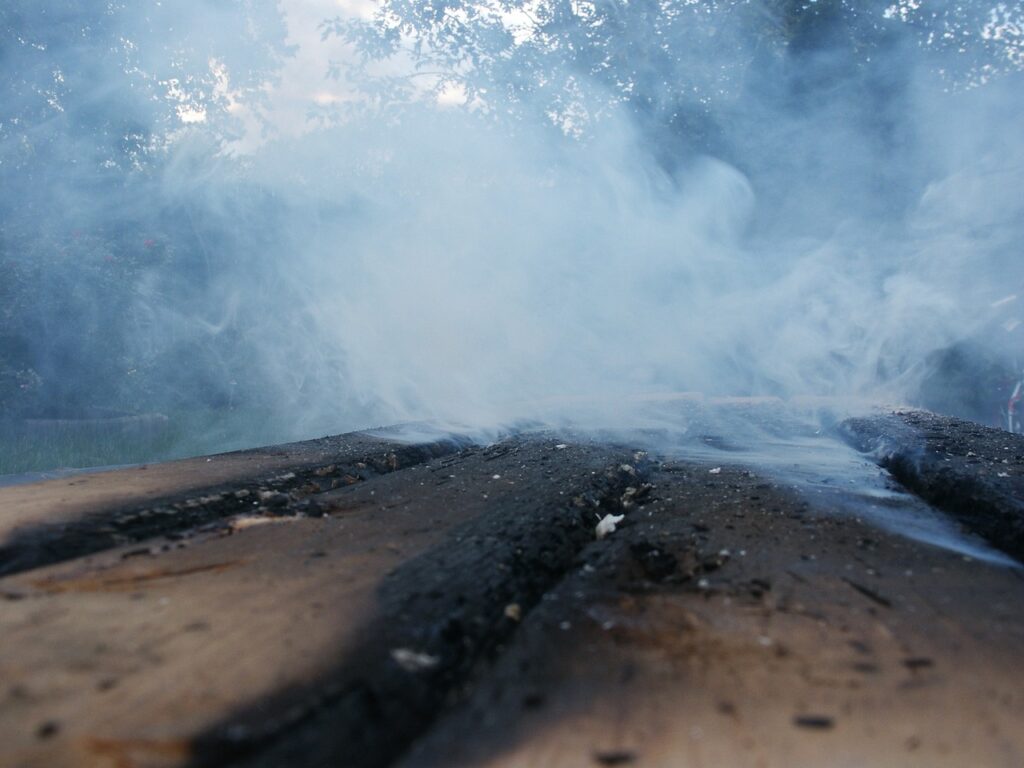
Finding Your Perfect Mask
With so many options available, finding the right mask can feel overwhelming. Consider your lifestyle, activity level, and personal preferences when making your decision. Do you need a mask for everyday commuting, outdoor exercise, or occasional use?
Don’t be afraid to try different masks to find one that you feel comfortable and confident wearing.
Want to know what other Hanoi residents are using? Read ‘Why Hanoi Locals are Turning to High-Performance Pollution Masks’.
The Hanoi Commuter’s Survival Guide: Essential Gear for Clean Air
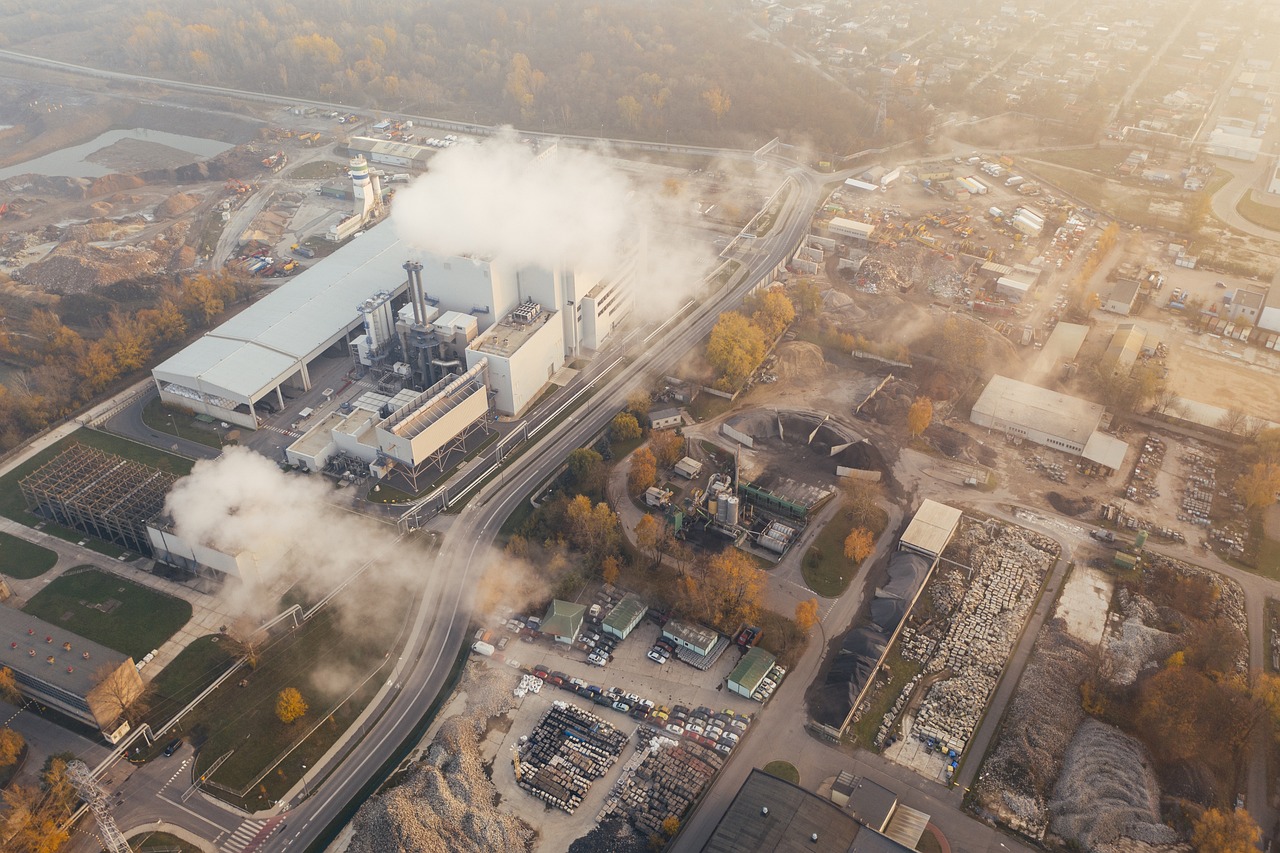
Navigating Hanoi’s bustling streets? Don’t forget the most important piece of gear for protecting your lungs – a high-quality pollution mask. Whether you’re commuting by motorbike, bicycle, or on foot, Hanoi’s air pollution poses a serious threat to your health.
Why Commuters Need Extra Protection
Commuters in Hanoi are particularly vulnerable to the harmful effects of air pollution. Spending hours each day exposed to traffic fumes and dust can take a toll on your respiratory system. Motorbike riders, in particular, inhale a concentrated dose of pollutants as they weave through traffic.
A pollution mask acts as a barrier between you and the harmful particles in the air, filtering out PM2.5, dust, exhaust fumes, and other pollutants. This is crucial for protecting your lungs and overall health, especially if you spend a significant amount of time commuting in Hanoi.
Choosing the Right Mask for Your Commute
Not all masks are suitable for commuting. Here’s what to look for in a mask that will keep you safe and comfortable on your daily journey:
- High Filtration Efficiency: Look for masks that filter out at least 95% of PM2.5 particles. N95, FFP2, or KN95 masks are good options.
- Breathability: Choose a mask that allows for easy breathing, especially if you’re physically active during your commute.
- Comfort: A mask that fits well and doesn’t irritate your skin will make your commute more enjoyable.
- Durability: Invest in a mask that can withstand daily wear and tear.
Additional Tips for Commuters
- Check the Air Quality: Before heading out, check the air quality index (AQI) for Hanoi. If the AQI is high, consider taking alternative transportation or adjusting your route to avoid heavily polluted areas.
- Wear Your Mask Properly: Make sure your mask fits snugly over your nose and mouth to prevent pollutants from leaking in.
- Replace Your Filters Regularly: Most masks have replaceable filters. Follow the manufacturer’s instructions for replacing filters to ensure optimal protection.
- Clean Your Mask: If your mask is reusable, clean it regularly according to the manufacturer’s instructions.
If you’re looking for a mask specifically designed for motorbike riders, check out our article ‘Hanoi’s Motorbike Madness: The Best Masks for Two-Wheeled Commuters.’
Hanoi’s Invisible Threat: How to Breathe Easy in a Polluted City
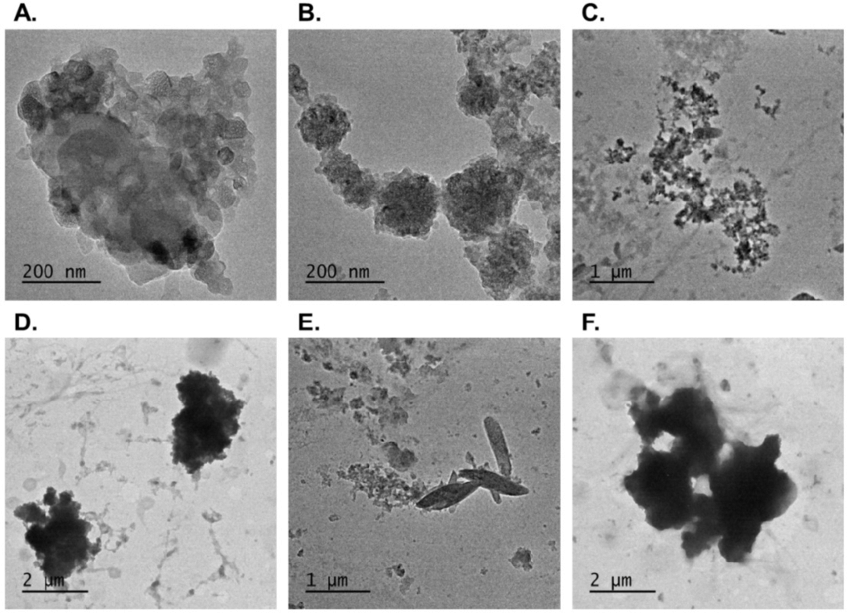
The air you breathe in Hanoi might look clear, but it’s hiding a dangerous secret that could be harming your health. Invisible pollutants like PM2.5 – tiny particles smaller than a human hair – fill the air, especially during peak traffic hours and in industrial areas. These particles can penetrate deep into your lungs, leading to respiratory problems, cardiovascular disease, and even cancer.
What is PM2.5 and Why is it Dangerous?
PM2.5 stands for particulate matter 2.5 micrometers or smaller. These particles are so small that they can easily bypass your body’s natural defenses and enter your bloodstream. Once inside, they can trigger inflammation, damage cells, and contribute to a range of health issues.
In Hanoi, PM2.5 levels often exceed the World Health Organization’s (WHO) recommended safe limits, especially during the dry season when the air is stagnant. This means that simply breathing the air can put you at risk.

The Health Effects of Hanoi’s Air Pollution
Hanoi’s air pollution has been linked to a variety of health problems, including:
- Respiratory Issues: Coughing, wheezing, asthma, bronchitis, and even lung cancer.
- Cardiovascular Disease: Heart attacks, strokes, and high blood pressure.
- Developmental Problems: Children exposed to high levels of air pollution may experience impaired lung development and cognitive problems.
- Other Health Risks: Air pollution has also been linked to diabetes, neurological disorders, and premature birth.

Protecting Yourself from Hanoi’s Air Pollution
While you can’t control the air quality in Hanoi, you can take steps to protect yourself and your family from the harmful effects of pollution. The most effective way is to wear a high-quality pollution mask that filters out PM2.5 and other harmful particles.
Not all masks are created equal, so it’s important to choose one that is specifically designed to filter out PM2.5 and other pollutants. Look for masks that are certified to meet international standards, such as N95 or FFP2.
But how can you be sure your mask is truly protecting you?
Learn how to test its effectiveness in our article ‘Is Your Pollution Mask Working?’
Can’t Breathe? Do These Breathing Exercises to Increase Your Lung Capacity!

It is possible to increase your lung capacity by doing a few quick breathing exercises every day.
It is common for everyone to feel anxious during this time when pneumonia and asthma are so rife. Especially for younger or older people with delicate lungs, it is important to know that are lungs bring oxygen to our blood. We need oxygen to survive because we need energy. To burn the food we eat to turn it into energy, oxygen must be supplied to our cells, and carbon dioxide must be removed. Oxidation occurs when carbohydrates and fats in our body combine with the oxygen we breathe in. The first major factor in getting enough oxygen is eating properly and exercising everyday.
Our lungs and our skin remove heat from our body, and our circulatory system moves substances to and from our cells. Our cells’ demands are constantly changing. The process of respiration is how air moves through our mouth and nose through our trachea (windpipe) straight down into our lungs. Our lungs absorb the oxygen and remove the carbon dioxide after which it is transported through the diaphragm (at the floor of our rib cage) to the rest of our body.
In our lungs we have bronchi, which are large tubes that the air flows through into smaller tubes called bronchioles. Then it moves into tiny air sacs called alveoli where the oxygen separates from other compounds in the air. The best part of the air is then moved into blood vessels called capillaries where the oxygen is carried through to the rest of your body in hemoglobin.
Factors that affect how much oxygen our bodies need include: age, sex, weight, physical fitness and level of physical activity being done. If we don’t get enough oxygen it can be dangerous because we can be affected by poor concentration, fainting, confusion, fatigue or hyperventilation.
Now we will tell you a few short breathing exercises that you can do whenever you have time. While you’re working, relaxing, walking, reading, or during any activity really. You can do it for however long you are comfortable, but we’ve observed best results when done for about 10 minutes twice a day.
- Breathe in deep through your nose… let your belly fill with air
- Breathe out through your nose
- Place one hand on your belly and the other on your chest
- Feel the air expanding your belly and practice full, deep breaths in and shorter breaths out
Another great exercise is to combine breathing with the tensing of muscles. For example, try this:
- Breathe in deep (for around 3 seconds) while tensing your biceps
- Then breathe out while releasing the tension in those muscles.
- Continue for all the muscles you can tense, one by one starting with your feet and ending with your ears.
One more great exercise you can do is a great way to release stress or anxiety.
- Breathe in deep through your nose, fill your belly and chest
- When you can’t breathe in anymore, open your mouth as wide as you can and breathe out with a “hah” sound
- Repeat as many times as you like.
We hope that these exercises will help you a little bit during your stressful days. After about a week of practicing for only 20 minutes a day, your lung capacity should have grown a little bit. You’ll feel less out of breath on your morning run or while climbing those stairs. You’ll also be able to hold your breath for a longer time under water. A tip for the next time you do a ‘hold your breath’ competition is to breathe in as deeply as you can (until you can’t breathe any longer). You can learn to find that perfect spot of lung fullness so that you’re not too full with air, but that you can continue to feed your air sacs for as long as possible. If you feel like you’re having difficulty breathing, that your chest is tight, or that you cannot take deep breaths without pain, do read these other exercises to improve your breathing.
The Wim Hof Method
While sitting in a comfortable place, take 30 quick, deep breaths, inhaling through your nose and exhaling through your mouth. Then, take a deep breath and exhale; hold until you need to breathe in. Inhale again, as deep as you can, and hold it for 10 seconds. Repeat as many times as you like.
Why Is Littering Heavily Controlled or Fined?

Countries spend millions of dollars on their clean up campaigns to make sure roadways, parks and coastal areas are kept clean. Sadly, there’s simply too much trash and people don’t seem to care where they leave it. The most common types of littering include cigarettes, food packaging, plastic bags, bottles, cans and paper. Countries are taking charge to discourage littering in different ways. Some countries enforce criminal penalties to punish the unwanted behavior while others may not care so much about it. In countries where littering is more seriously punished, fines all the way up to $30,000 depending on the volume of trash littered are imposed. 
What can people be fined for?

Did you know, “75% of Americans Admit to Littering within the last 5 years”
In most countries, fines are implemented when people litter anything. Throwing food waste, cigarette butts or chewing gum on the ground anywhere can be considered littering. In public areas that have cleaners, like subway, train or bus stations, people tend to care less about the trash they litter. These areas though usually have enough trash bins for people to dispose trash in.
Dog owners are often fined in city centers around the world for not cleaning up after their dog. It makes sense for the benefits of others using public areas that dog owners take the responsibility for their pets.
Putting up posters without permission, often called ‘fly-posting’ is visible in most places around the world. You’ll find posters for everything and anything on walls everywhere. Most cities imply fines for people advertising without permission from the government.
Grafitti is another punishable crime in most places. It is also seen as spoiling the clean looks of a city.
Why do countries fine littering?
Clean communities have a better chance of attracting new business and residents and tourists. The first challenge here is that it’s not entirely fair to highlight the most polluted. Big picture some of the most polluted countries are the ones with lots of heavy industry, which tend to be more in Asia. Many of these countries are actively trying to address this, by moving to more environmentally friendly industries and transitioning their economies towards service economies. Not only are governments tired of seeing their cities dirty, but they are also fed up of having to spend more money on cleaning up the environment. Education and awareness is where a lot of investment is going to now. People are starting to learn that if they want a cleaner environment, they have to start at home by recycling.
Other ways countries are trying to stop people from littering include making it mandatory for sellers to offer deposits on cans and bottles. This reduces the amount of trash left on streets. Also, the fees around the world are rising for plastic bags that used to be free. Many developing countries still haven’t started requiring fees on bags or offering reusable bags.
What happens if littering is not fined?
Plastic bags are a major eyesore. Easily carried by the wind, they hang in bushes, float on rivers, flap from fences, clog drains, choke animals and blight landscapes. In countries such as South Africa or Bangladesh, and recently Ireland, plastic bags are a major eyesore.
Litter kills or injures animals. Many small animals crawl into bottles or jars and get stuck and slowly starve to death. Animals get caught in plastic six pack rings, plastic bags, fishing line and a multitude of throwaways. Birds that are stuck, can’t fly away from danger. Litter is a problem that can be controlled. Education is an important tool. People who are aware of the dangers of litter often make more of an effort to always put their trash the correct place. They also spread the word to others they see littering and teach them to dispose of garbage the right way. Community clean ups encourage people to take pride in their community and keep it clean. Quick removal of litter keeps it from growing into an unmanageable dump site. People can make a difference. Litter can be conquered.

What is the highest fine worldwide? And where?

Singapore is notorious for its strictly enforced anti-littering laws. In January 2020, a smoker was fined $19,800 (£9,500) for throwing cigarette butts out of his window.
In countries like Singapore, Switzerland, Australia, Japan, and the UK; fines are among the highest in the world. Not littering has become part of Japan’s culture. The Japanese are the kings and queens of recycling, with much of their trash divided and subdivided into different types. “Gomi guides” for each town outline what can be recycled where and when, and can run to tens of pages.
Open incineration of waste is a very sad part of the majority of the cities in the world. There’s simply too much trash. It cannot simply be picked up and collected. We should all remember that the less we litter, the less trash will be burnt in the streets, the better our world will look, and the less we will suffer in the future. Here’s a video of the Japanese town: Kamikatsu, which takes recycling very seriously and has basically become a no-trash city. https://www.youtube.com/watch?v=eym10GGidQU&feature=emb_title
Japan recycles about 77% of its plastics, according to its Plastic Waste Management Institute, almost double the level of Britain, and well above the 20% currently managed in the United States.
So why do people litter?
People are simply lazy. We see what other people do and copy them. We see trash in places and we cannot bother to pick it up. We drop it where exactly we don’t have any use for it anymore. People don’t care about the future effects of trash on the environment. Smokers are more worried about their fix than the butts that they dispose of. People are also ignorant, which means they have not been told or educated by anybody about the negative effects of littering. Some people may not have enough pride to care about being lazy or ignorant. Another reason is that maybe there haven’t been any examples of consequences for littering. If people don’t get a fine, they usually don’t change. If they are not personally affected by the trash they leave behind, then they will never change. That’s the sad thing. The uneducated don’t care about the non-litterers and the decisions they make not to litter.
So, what should we NEVER litter?
Household Agents that are hazardous need special Waste management and they include: Automotive products (antifreeze, fluids, motor oil, oil filters, gasoline, polish and wax); Batteries (home and vehicle)Electronics ( TV, computers, laptops, cell phones, printers, fax machines, MP3 players, DVD/CD/tape players, and more); Fluorescent light bulbs and compact fluorescent lamps (CFL); Household cleaners ( ammonia, drain cleaner, rust remover, tile/shower cleaner and more); Universal materials( include mercury containing items: thermometers, thermostats); Paint products ( oil-based paint, latex paint, spray paint, caulk, wood preservative, wood stain); Garden chemicals (pesticides, herbicides, fertilizers, insecticides); Sharps (needles and lancets); Swimming Pool Chemicals. Waste disposal, Collection and Removal, Recycling Centers
Did you know 40% of food in the US is never eaten?
So, where does our trash go?
Where You Can Go in a Good Mask

With the pandemic causing so many deaths in countries around the world, face masks have become a symbol of this period of time. You can see many people wearing masks to protect them from the virus. From homemade masks, surgical masks to even rare masks such as those with N95 or P100 filters, you can see that wearing a mask is the new norm.
Thus, it is more crucial to understand that there are places where wearing a protective mask is an absolute must. Regular face masks won’t be enough in these areas. What you need are those masks with a high rating. Ratings like N95 are tested to remove more than 95% of PM2.5 particles whereas the N99 rating removes more than 99% of PM2.5 particles, which is very similar to the European Standard FFP2.
What are those masks with P100 filters?
As we all know, masks have filters that are rated based on how much particulate matter they can efficiently block. With a P100 rating, these masks would be able to block 99.9% of particles 0.3 microns or larger. For instance, there are gas masks with P100 ratings. According to the CDC, gas masks are known to be air-purifying respirators. They filter or clean chemical gases and any other particles out of the air you breathe. This respirator often has a facepiece or masks and a cartridge or filter. These are also often secured by straps on the top of the head.
Places You Can Use Gas Masks
-
Areas Dealing with Hazardous Waste
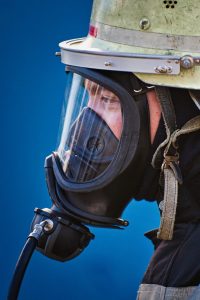
There are people called hazardous material removal workers or hazmat workers who deal with dangerous waste. They use full protective suits and respiratory-type gas masks to remove, dispose, or transport nuclear waste, radioactive waste, and other types that could harm the environment or the public. The masks provide clean air when dealing with such toxic waste.
-
Areas with Nuclear Radiation
There are factories and nuclear power plants that deal with nuclear radiation.
They can even be found near some places where people live. If you are an employee or someone who lives close to these factories or plants, you will need a gas mask to protect you from the harmful air. In cases of emergency, these masks will also come in handy because wearing one could be the difference in survival.
-
Areas in Healthcare or Medical Facilities
Most doctors, nurses, and any other medical or healthcare professionals can be found wearing masks to protect themselves and ensure the safety of the patients and other people.
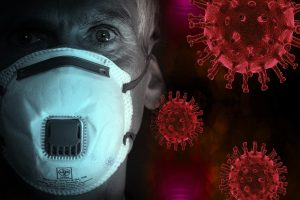
P100 masks are efficient when it comes to contagious diseases such as COVID-19, the swine flu and avian flu, as stated by Enviro Safety. These filters can help block most airborne hazards, which is why it is normal for people to wear these masks during a pandemic to prevent the spread of a virus.
-
Areas with Poor Air Quality
Most people won’t be able to easily avoid areas with poor air quality because of the nature of their jobs, such as those who work in construction, food processing plants, agriculture, or even pharmaceutical manufacturing. These workers are usually exposed to dust, hazardous mist, and fumes. But, with P100 masks, they would be protected from 99.97% of particulate matter and gasses when properly worn.
As can be seen above, there are jobs that use face masks, so there is no reason for you not to get one. Keep your lungs safe with masks and avoid causing any harm to them!
Buy No Mask Until You’ve Made Sure of These Factors
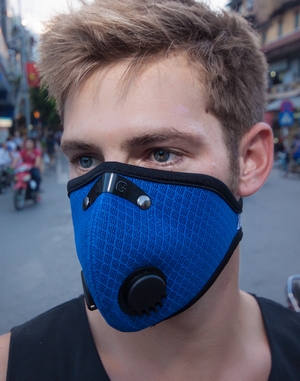
Wearing masks is especially more relevant these days with the pandemic causing chaos amongst many countries. People have seen the need for wearing face masks to protect themselves from the virus. But, in actuality, regardless of the pandemic, masks should be a given in our everyday lives. This is because we are often exposed to pollutants, be it inside our homes or outside in the city.
If you are considering wearing masks, then this is the time for you to think of the following factors when buying:
Filters should remove more than 95% of PM2.5 particles.
According to Better, Particulate matter or PM2.5 particles pertain to particles in the air that cause pollution. These are the smallest and most dangerous forms of air pollution.

That is why you need face masks with PM2.5 filters. Research has shown that these filters can help capture nanoparticles with a high degree of efficiency, which is approximately 95% or more. Lab tests have also demonstrated that a properly-fitted cloth mask with a PM2.5 filter will be able to decrease airborne particulates by at least 90%.

The mask is comfortable to wear.
Aside from its practicality and functionality, comfort must not be compromised.

Your face mask is something that you’ll regularly be wearing indoors or outdoors.
No one would want to feel uneasy wearing their mask. That is why masks should be created with your convenience in mind. Who would want to wear a mask that makes you feel unsettled and would result in you taking it off, which defeats the purpose?
It doesn’t fog up your glasses.
One of the things that you should consider before buying a face mask is whether it will fog up your glasses. This is a major no-no, especially for those who struggle with their eyesight. For this reason, you need the perfect mask that will be the right fit. Most masks either have flimsy or nonexistent nosepieces which are put in place to form a tight seal around the bridge of your nose. Having a strong and adjustable nose piece will result in avoiding fogged-up glasses. This is because your mask needs to fit securely over your nose or is shaped to fit your face to keep warm air from exiting up to your glasses, as stated by Dr. Hamilton.
It doesn’t add to the trash dump.
There are several types of face masks to choose from. It can be a reusable or disposable mask. But, if you are conscious of taking care of the environment, make sure that you are purchasing the appropriate kind of mask. In fact, it is shown that disposable masks often end up in trash dumps. This negatively affects the environment because most of these masks have polypropylene, which is a thermoplastic polymer and is considered plastic waste. Thus, you should choose masks that are reusable while having the necessary features for protection against pollutants and other particles.
It can be used constantly so you can make it a habit.
When it comes to wearing masks, you should be able to wear them every day without feeling the need to take them easily. In this way, you can make it a habit which will result in
you having healthy lungs. Masks are also the best way for you to avoid pollutants that can cause long-term health effects. You’ll be able to minimize the risks of air pollution and other viruses.
Remember all of these factors, and you’ll be able to buy the best mask possible.Keep in mind that you should also be carefully looking at its features and whether it would suit what you are looking for. You can see the various available masks here.
The Trash Train – Tracking Pollution To The Dump

As you go on about your day to day activities and see your garbage collector cart your trash away, you may have briefly wondered what happens to the trash they have picked up.  You might question whether some of it will be recycled or if it’s just going to end up in a landfill, or worse: in the ocean.
You might question whether some of it will be recycled or if it’s just going to end up in a landfill, or worse: in the ocean.
If you want to know what happens, here are some common scenarios as to where your garbage goes after it leaves your house:
It goes to dumps or landfill sites to be buried
Unless you have chosen to live a life with zero-waste, you contribute to the growing problem of overfilled trash dumps and landfills. Dumps are open holes in the ground where your trash is buried and where pests such as rats and mice swarm around. On the other hand, landfills are structures designed to be built into or on top of the ground. Trash should be isolated from the surrounding environment, according to How Stuff Works. Unfortunately, this is not always the case.  Our trash continues to pile up in growing mountains of trash that has not been separated. It starts to mold and fill the air with a stench you can smell miles away. If a landfill is successfully managed, there is a good chance that soil can be added to it, and that it can become a hill or mountain with grass, bushes or trees on top. This is done to allow the trash to decompose faster, and to block the negative factors of an open trash dump. The issue is that in many countries the trash keeps piling up and there will never be enough space to leave the last trash dump behind and move on to the next one.
Our trash continues to pile up in growing mountains of trash that has not been separated. It starts to mold and fill the air with a stench you can smell miles away. If a landfill is successfully managed, there is a good chance that soil can be added to it, and that it can become a hill or mountain with grass, bushes or trees on top. This is done to allow the trash to decompose faster, and to block the negative factors of an open trash dump. The issue is that in many countries the trash keeps piling up and there will never be enough space to leave the last trash dump behind and move on to the next one.
It gets burnt or incinerated
There are some places where waste is sent to be incinerated for waste-to-energy plants while some localities without the luxury burn it in piles. In fact, Christine Wiedinmyer, an atmospheric scientist, found that at least 1.1 billion tons of waste, which is more than 40% of the world’s garbage, is burned in open piles. Trash burning actually produces a lot of carbon dioxide emissions.

The newer facilities do have the ability to incinerate trash at extremely high temperatures, while removing the majority of the pollutants before the exhaust fumes are released into the air. The problem however are that these cost hundreds of millions of dollars to set up. Currently at least 50% of waste is made up of carbon by mass. For these reasons, it can also be stated that it contributes to air pollution in many countries today.
It gets recycled
A lot of places have waste transfer stations where they accept and sort trash out. Recyclables and other materials go to recycling centers.

Moreover, nowadays, people are encouraged to recycle and reuse materials such as plastics to help with the environment. Much of our waste is caused by these materials that do not decompose easily. Because of them, landfills and trash dumps are overflowing, and even the sea is full of waste and endangering marine life. Thus, it is always better to know these tips on how to have effective recycling habits.
Following some of the beneficial actions you can take to reduce your trash output, there are different ways in which most people dispose of their garbage. Of course, there are also some people who do not follow the rules their cities set out for them and they dump it in places they shouldn’t. Some localities are exporting trash, but it is very difficult to deal with such large amounts of such a disgusting formation. There are many expensive ways to deal with our trash output so that certain plastics and other volatile compounds are not mixed with organic matter and left.
Millions of kilos of trash do not get disposed of properly and will remain on our earth for a long period of time. This has caused an alarming reminder to all of us that we should be responsible for our trash. So, remember the three R’s: Reduce, Reuse, and Recycle!


